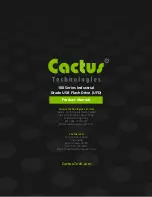
Guidelines for managing disks and volumes
Storage servers with con
fi
gurable storage
When managing disks and volumes:
•
Do not alter the operating system disk labeled Local Disk C:.
•
Do not alter the disk labeled “DON’T ERASE.”
•
The use of software RAID-based dynamic volumes is not recommended. Use the array controller
instead; it is more ef
fi
cient.
•
The largest disk that Windows Storage Server 2003 can accommodate from a storage system is
2 TB.
•
HP does not recommend spanning array controllers with dynamic volumes.
•
Use meaningful volume labels with the intended drive letter embedded in the volume label, if
possible. (For example, volume e: might be named “Disk E:.”) Volume labels often serve as the
only means of identi
fi
cation.
•
Record all volume labels and drive letters in case the system needs to be restored.
•
When managing basic disks, only the last partition on the disk can be extended unless the
disk is changed to dynamic.
•
Basic disks can be converted to dynamic without bringing the system of
fl
ine or loss of data, but
the volume is unavailable during the conversion.
•
Basic disks can contain up to four primary partitions (or three primary partitions and one
extended partition).
•
Format drives with a 16 K allocation size for best support of shadow copies, performance,
and defragmentation.
•
NTFS formatted drives are recommended, because they provide the greatest level of support for
shadow copies, encryption, and compression.
•
Only basic disks can be formatted as FAT or FAT32. Dynamic disks are not supported, nor
can they be con
fi
gured in a cluster.
Storage servers with pre-con
fi
gured storage
When managing disks and volumes:
•
Read the online Disk Management help found in the utility.
•
Do not alter the operating system disk labeled Primary OS C:.
•
Use meaningful volume labels with the intended drive letter embedded in the volume label, if
possible. (For example, volume F: might be named “Disk F:.”) Volume labels often serve as the
only means of identi
fi
cation.
•
Record all volume labels and drive letters in case the system needs to be restored.
•
When managing basic disks, only the last partition on the disk can be extended unless the
disk is changed to dynamic.
•
Basic disks can be converted to dynamic without bringing the system of
fl
ine or loss of data, but
the volume is unavailable during the conversion.
•
Basic disks can contain up to four primary partitions (or three primary partitions and one
extended partition).
•
Format drives with a 16 K allocation size for best support of shadow copies, performance,
and defragmentation.
•
NTFS formatted drives are recommended because they provide the greatest level of support for
shadow copies, encryption, and compression.
•
Only basic disks can be formatted as FAT or FAT32.
56
File server management
Содержание ProLiant DL100 G2 DPSS
Страница 12: ...12 ...
Страница 18: ...18 About this guide ...
Страница 26: ...26 The HP storage server solution ...
Страница 46: ...46 Storage management overview ...
Страница 134: ...134 Troubleshooting servicing and maintenance ...
Страница 152: ...152 Regulatory compliance and safety ...
















































